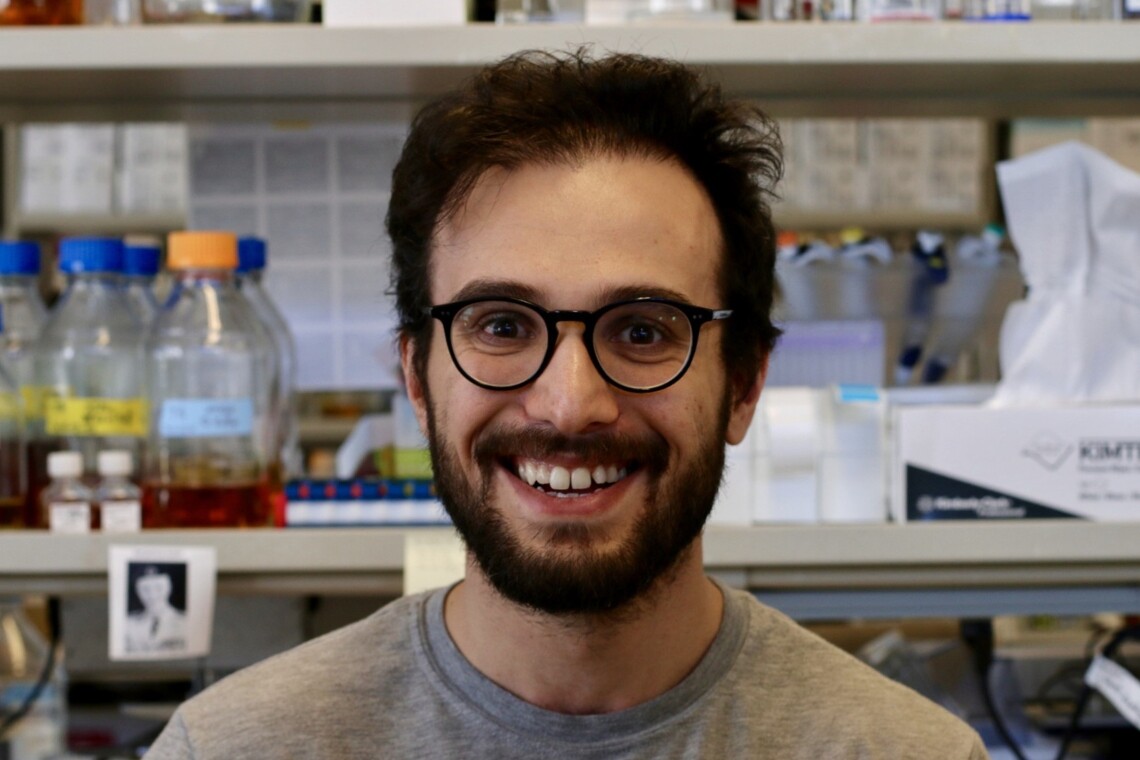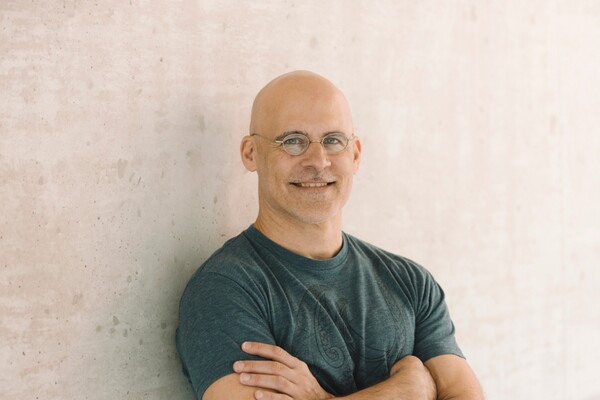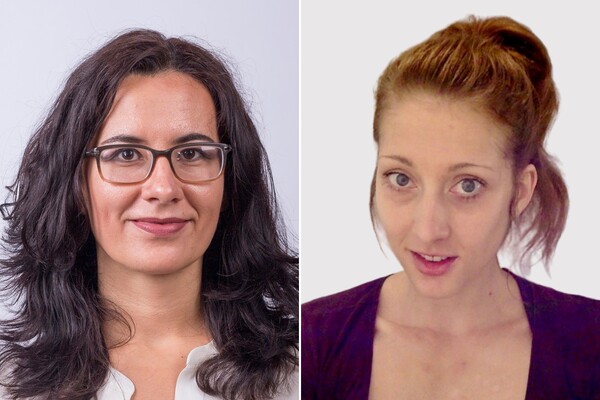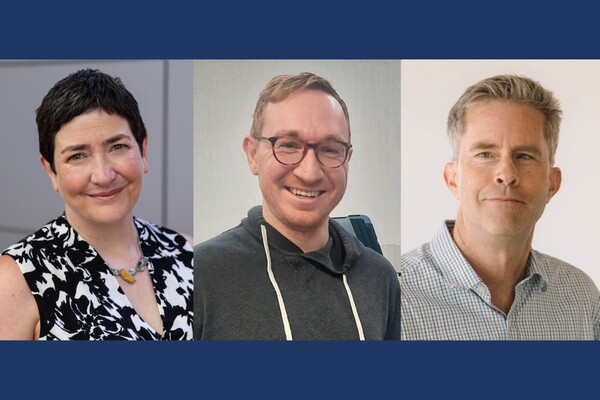Nader Alerasool Wins Donnelly Centre PhD Thesis Prize

The Donnelly Centre for Cellular and Biomolecular Research recognizes an outstanding thesis produced by one of its PhD graduates each year with the Donnelly Centre Research Thesis Prize. The 2023 recipient of the Thesis Prize is Nader Alerasool, a PhD graduate from the Taipale lab who conducted his research under the supervision of Mikko Taipale, professor of molecular genetics. The Thesis Prize is awarded based on the quality, originality and significance of the PhD graduate’s work.
Alerasool completed his PhD degree in molecular genetics in January 2022. Having previously studied in Iran, Germany and Montreal, Alerasool was drawn to the University of Toronto and the Donnelly Centre by the possibility of combining technological development with biology for his PhD research. The freedom to collaborate across disciplines is the foundation on which the Donnelly Centre is built, attracting ambitious researchers like Alerasool, who may not have been able to find the flexible environment they need to innovate elsewhere. The level of collaboration that takes place at the Donnelly Centre also allows for the sharing of space and resources that makes large-scale experimentation possible—another benefit that hooked Alerasool.
Alerasool was one of the first students to join the Taipale lab in 2015, finally landing in Mikko Taipale’s lab following three rotations in other labs at the University of Toronto. The Taipale lab, a supportive environment for those with broad and diverse research interests, was a perfect match for Alerasool.
Taipale was looking to start a research project on transcriptional regulation, which would involve the kind of technological development that Alerasool was interested in taking on. Taipale provided the research question to explore: what is the impact of individual transcription factors on gene regulation? Alerasool was tasked with finding out how to answer this question by developing a way to identify transcriptional regulators among all possible options.
Taipale recognized the risk Alerasool was taking by pursuing this project, as it involved substantial technological innovation and was not directly related to Taipale’s recent research. Alersaool had the freedom and support he was searching for, but he would ultimately be responsible for seeing the project through to the end.
Gene misregulation is linked to many diseases and developmental issues, as well as the development of tumours. Determining which transcription factors lead to misregulation remains a vast and central issue in the field of molecular genetics. Alerasool’s attempt to tackle this issue involved systematically determining the influence of transcription factors on gene expression, resulting in him creating an innovative pooled strategy to study the transcriptional activity of thousands of proteins.
To develop this strategy, Alersool had to first set up a system to identify proteins that were either transcriptional activators or repressors. He tested different cell lines, target genes and delivery systems, but nothing seemed to work. This testing continued for two years without results; Alerasool suspects Taipale played a significant role in ensuring he passed his qualifying exam, without having much to show for his efforts at that point.
"Know that if you are having a rough time, you are not alone. I was fortunate to have Mikko, lab mates and friends to help me navigate through difficult times,” said Alerasool. “Remember that science is full of remarkably kind and talented individuals, so don't be shy to ask for help. In the end, a bit of luck and a lot of teamwork is needed, so don't be too hard on yourself."
When Alerasool was about to call it quits in 2016, he came across a new study from Stanley Qi’s lab at Stanford University that sparked one last idea to test. This changed the trajectory of Alerasool’s PhD career: the final experiment had worked. He had succeeded in screening 14,000 proteins to identify those that activate transcription. This project has resulted in a catalogue of over 200 human transcriptional activators, including some that previously had no known connection to transcription, and a genome-wide tool for identifying transcriptional regulators. These were breakthroughs in the field, with the potential for therapeutic applications via the design of artificial transcriptional regulators based on existing ones.
“Nader is a good example of how meticulous troubleshooting and perseverance can turn things around,” said Taipale. “Two years into a research project, he had nothing to show for it due to the level of technical difficulty it took to eventually pull off. But when he graduated, he left a lasting impact on our lab and the field, with multiple publications resulting from collaborative work and the research that he spearheaded.”
On the flip side of transcription activation, Alerasool also identified a more effective Krüppel-associated box (KRAB) domain for repressing target genes than any other KRAB domain used for CRISPRi screens at the time.
CRISPRi is a tool used by molecular geneticists to silence the expression of specific genes, with the aim of determining the function of each target gene. It requires the fusion of inactive Cas9 with a KRAB domain for gene repression. Prior to Alerasool’s discovery of the potency of the ZIM3 KRAB domain, CRISPRi was not capable of completely repressing the expression of target genes. The ZIM3 KRAB domain has made a significant impact on human genome engineering; it is now the standard for CRISPRi screens.
“Nader was awarded the Thesis Prize because his PhD research encompasses two important achievements, both of which resulted in major publications,” said Jack Greenblatt, professor of molecular genetics and chair of the Donnelly Centre Research Thesis Prize selection committee. “First, he developed technology that substantially improves CRISPRi screening for targeted gene repression. Second, he identified the surprisingly small subset of approximately 1,600 human transcription factors that are capable of activating the transcription process. His thesis is driving progress in molecular genetics and contributing to shared tools used in the field.
Alersool made several breakthroughs in his research, despite long-term challenges, and even managed to land a full-time job a few months before graduating. He spent a year working for Mammoth Biosciences, Inc., a gene therapy company, building pooled screening platforms to study the activity of nucleases, which are enzymes that cut DNA strands, and designing tools to find variants of nucleases. Alerasool has now been working at NewLimit since 2022, where he is learning to help build a new company from the ground up and contributing to work that aims to give people an immunity boost by reversing aging.
News



